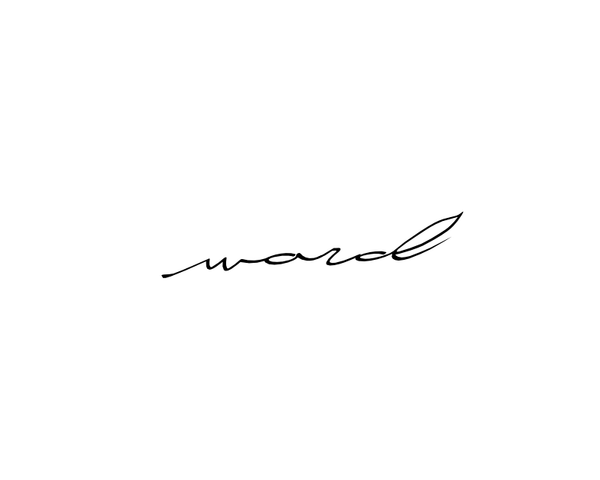
COFFEE BREW RECIPES & EXTRACTION
COFFEE BREW RECIPES + EXTRACTION
Recipe Collection + Extraction Principles
In this article, I will explain in a simple manner the collection of brewing recipes published by THE WORD COFFEE and the three basic brewing principles that you should know at a minimum, which will be useful when adjusting recipes for yourself.
THE WORD COFFEE Recipe Collection
*Updated regularly
1: Drip extraction recipe using a dripper
2: Brewing recipes using other brewing equipment
3: Recipe for quick-cooling and cold-brewed iced coffee
4: Recipe for dip style coffee bags
・HOT
・ICED
Principles and Basics of Coffee Extraction
1: Changes in extracted components
The components of coffee dissolve into water in roughly the following order: sour → sweet → bitter → astringent or impurities.

You can control the flavor by stopping the extraction at any time during the process of the extracted ingredients changing.
For example, if you like sour coffee, use light roasted beans and finish the extraction when the sourness to sweetness is extracted. If you like bitter coffee, use medium to dark roasted beans to bring out the bitterness and finish the extraction before any unpleasant flavors appear.
2: Extraction efficiency
Generally, the amount and speed of the extracted components moving into the liquid is expressed as extraction efficiency. For example, when comparing extraction efficiencies with the same extraction time, the results are as follows.
・High extraction efficiency = Faster amount and movement of components = Higher liquid strength and concentration
・Low extraction efficiency = Slow amount and movement of components = Low liquid strength and concentration
The most common way to adjust the extraction efficiency is to adjust the water temperature and the powder particle size. Roughly speaking, if you increase the water temperature and use finer powder, the extraction efficiency will increase and the liquid will be thicker, and if you decrease the water temperature and use coarser powder, the extraction efficiency will decrease and the liquid will be thinner .
Based on this principle of extraction efficiency, we adjust the recipe by adding various variables as needed.
- This time we will leave out the more technical details of TDS and yield.
3: Principle of how ingredients are extracted using extraction equipment
・Transmission type, immersion type, semi-immersion type
The brewing equipment is the first important factor that greatly affects the taste of coffee. You need to choose the most suitable brewing equipment depending on your purpose and the type of coffee you want to express.
・ In a single-hole conical dripper such as the V60, the ingredients continue to move into the water while it is pouring. This is called a permeable dripper . It has a wider range of expression and tends to have a clearer flavor profile.
・Due to its structure, a trapezoid dripper with 2-3 holes limits the amount of liquid that falls out. Also, as hot water accumulates in the dripper, the ingredients become slightly saturated, which means that over-extraction (excessive extraction of ingredients) is relatively rare, and the taste tends to be milder. This is called the semi-immersion method .
・ French press and dip-style coffee bags extract the ingredients by steeping the grounds in hot water. This is called the steeping method . As time passes and the process becomes saturated, the ingredients stop moving, resulting in a milder flavor with less unpleasant flavors.
*Saturation state = When the concentration of liquid components is in equilibrium
The permeable type requires a certain level of extraction technique, so it is for advanced users. On the other hand, it allows for a wide range of flavors, so it is the perfect brewing device for pursuing your favorite flavor.
The semi-immersion method is suitable for beginners because the dripper adjusts the amount of water that drips. It is also widely used by professionals because it is highly reproducible.
The immersion method is the easiest, and anyone can brew coffee with the same taste. Cupping is also done with the immersion method. (Strictly speaking, cupping is done in a slightly different way than French press, etc., because negative ingredients are also evaluated.) The disadvantage is that it is difficult to make fine adjustments and express the taste like the permeation method.
The total time required for extraction, including the steeping time, and the progression of ingredients are automatically determined as a result of creating a recipe based on the principles of extraction equipment and extraction efficiency.
We have provided a simple explanation of the basic principles of extraction, but if you create a recipe based on an understanding of these three principles, which are surprisingly often overlooked, you may find that those who are struggling with issues such as poor extraction, not being able to achieve the desired flavor, or not knowing why, will see something new.
"Only you can make the best tasting coffee yourself"
Based on this idea, THE WORD COFFEE pursues and publishes simple recipes that eliminate variables as much as possible so that you can easily adjust the recipe when brewing by yourself, and continues to provide various information related to brewing on its blog and elsewhere.
I hope this article will help you find the recipe that will make the coffee that you find most delicious.
*THE WORD COFFEE also publishes recipes on YouTube .
